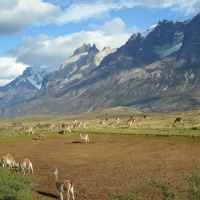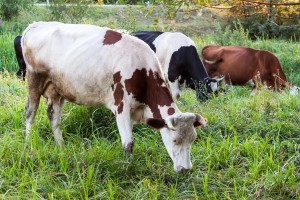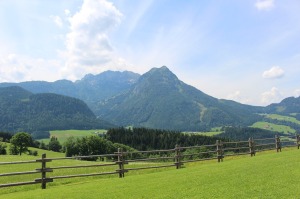

Can’t wait for Spring? Must Know Tips for your Pasture
 Posted by SLN Staff on Feb 23rd, 2015 | Comments Off on Can’t wait for Spring? Must Know Tips for your Pasture
Posted by SLN Staff on Feb 23rd, 2015 | Comments Off on Can’t wait for Spring? Must Know Tips for your Pasture 

Looking forward to the arrival of spring? Even if your pasture is still covered with snow, you need to start to prepare your pasture for spring before it gets here! Spring is always a busy season for farmers and that is why now is the best time to start planning ahead for spring.
Managing your pasture is the best way to ensure that you have enough feed for your livestock all year round. Healthy grasses and forbes on your pasture is the best source of feed for your animals. It will take some hard work and dedication for you to ensure your pastures health but it will go a long way to increase your farm production.
Pasture management is closely linked with your animals health because it not only supplies vital nutrition for your animals but it is also where your animals will spend most of their time during the day.
Spring pasture management tips
When setting up your grazing system, there are several factors that you need to keep in mind. Proper grazing management will significantly improve pasture productivity allowing the animals to do what they do best and convert grasses and forbes to milk, meat, or fiber. Here are a few things to consider before spring.
1. Improving pasture production
 To improve your pasture production, you need to improve your existing pasture yield and increase its carrying capacity. This is important if you have a limited area and want to increase the number of animals per unit area. Improving pasture productivity also means improving your pasture quality, you want more plants but additionally you want a variety of plants on your pasture.
To improve your pasture production, you need to improve your existing pasture yield and increase its carrying capacity. This is important if you have a limited area and want to increase the number of animals per unit area. Improving pasture productivity also means improving your pasture quality, you want more plants but additionally you want a variety of plants on your pasture.
High quality pasture will increase production of your animals because your need for feed supplements are decreased and your animals grow and produce more. To increase your profits, you need to consider distributing your feed throughout the year so that your animals are well fed throughout the seasons. This means maintaining some of your pastures for hay production so you can cut, dry, and store healthy vegetative feed for your livestock to eat all winter.
The most important factors to keep in mind for pasture management and improving pasture production and quality are as follows:
- Fence system
- Stocking rate
- Paddock size
- Increasing pasture quality
- Watering system
- Soil management
- Introducing native species and varieties of grass
- weed and brush control
If you utilize and manage your pastures effectively, you will not need to spend much to increase pasture quality and productivity.
2. Overseeding legumes
Legumes add nitrogen to the soil naturally, and eliminate the need for adding high priced nitrogen based fertilizers to the soil. They also increase distribution of forage dry matter by increasing summer productivity and quality. You can use several types of legumes for seeding including red clover, white or alsike clover and alfalfa.
3. Frost seeding
Frost seeding gives you the best opportunity to restore your pasture when we still have warmer days and cold nights. Frost seeding is accomplished best when the soil “honeycombs” this is when soil cracks into a distinct pattern. The freezing and thawing action of the soil works the seeds into the soil making for improved germination. (Source: psu.edu)
3. Apply soil nutrients
 It is best if you know the nutrient levels of your soil before applying nutrients such as phosphorus (P), potassium (K) or other micro-nutrients. It is best to apply fertilizers as soon the snow melts. It may be a good idea to spread fertilizers when your ground has a bit of frost but is not frozen solid. If the soil is frozen solid you will risk losing your fertilizers to run off, and therefore losing your investment, in addition to potentially polluting the surrounding environment with excess nutrients. The best time to apply fertilizers is after the main thaw when the surface is firm again.
It is best if you know the nutrient levels of your soil before applying nutrients such as phosphorus (P), potassium (K) or other micro-nutrients. It is best to apply fertilizers as soon the snow melts. It may be a good idea to spread fertilizers when your ground has a bit of frost but is not frozen solid. If the soil is frozen solid you will risk losing your fertilizers to run off, and therefore losing your investment, in addition to potentially polluting the surrounding environment with excess nutrients. The best time to apply fertilizers is after the main thaw when the surface is firm again.
4. Drag pastures
Dragging and mowing pastures can increase your pasture fertility and reduce your feeding costs. Many nutrients are returned to the soil by breaking and dragging the piles of manure and urine. Dragging allows a more even distribution of manure over your pasture than livestock would leave it naturally.
5. Plant spring oats
Plant spring oats early if you have the option of grazing in rotation. This will provide more dry matter and help you to extend the cool season pasture. You can plant 2-3 bushels of oats per acre and graze when the plants have grown. The same paddocks can be used later on in the spring for permanent pasture seeding.
Conclusion
Get your pastures ready for grazing before the spring arrives. Snow storms could have damaged your farm. So, it’s important that you physically inspect your farm and pastures regularly to check your soil composition, your fence condition, and clear your pasture of any trees or branches that may harm your animals. You may also need to make repairs to your barn, fence, and animal shelters.
Grazing efficiently, improving your pasture quality, and finding alternate sources of feed could reduce your production costs and increase your profits.
If you would like to learn more about pasture management, please leave your questions or comments in the comment box below or visit our Facebook Page and leave your comment there.
P.S: Have you tried our micro-green fodder system? Would you like to learn about it? Please Click here to book a meeting with us.
Source: Sustainable Livestock Nutrition
Resources and related articles:
- Livestock Care & Forage Management for Fall& Winter | Sustainable Livestock Nutrition
- What to feed Your Cattle Herd During the Cold Winter? | Sustainable Livestock Nutrition
- Spring Pasture Management Tips — Crops and Soils — Penn State Extension
- Improving Pasture Production
- Leading Cattle in Pasture & Rotational Grazing | Sustainable Livestock Nutrition





